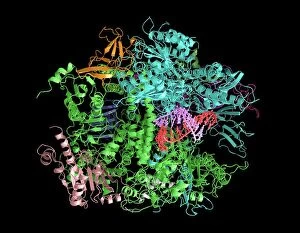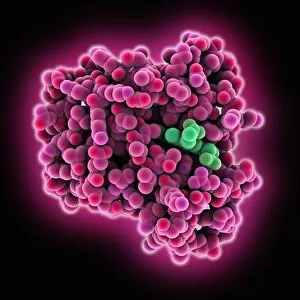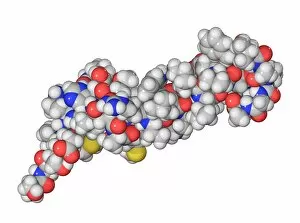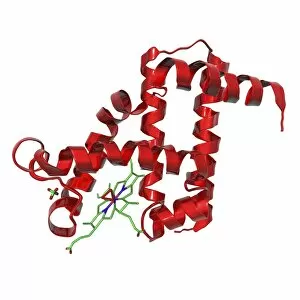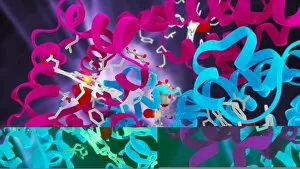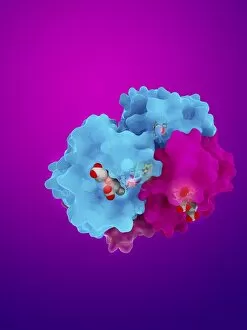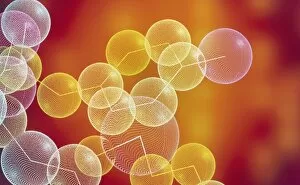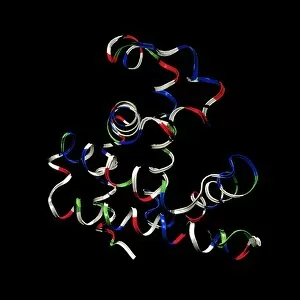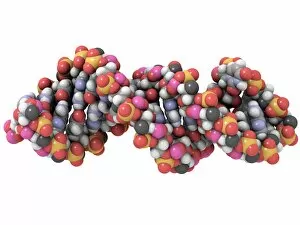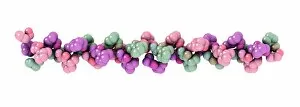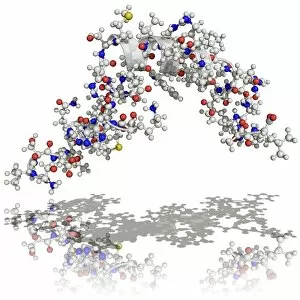Polypeptide Collection
Polypeptide: The Building Blocks of Life From DNA transcription to molecular models, polypeptides play a crucial role in various biological processes
For sale as Licensed Images
Choose your image, Select your licence and Download the media
Polypeptide: The Building Blocks of Life From DNA transcription to molecular models, polypeptides play a crucial role in various biological processes. Enkephalin crystals, as seen under a light micrograph, demonstrate the intricate structure and beauty of these peptides. The human growth hormone molecule and parathyroid hormone molecule showcase the diversity of polypeptides found within our bodies. Their unique structures enable them to perform specific functions essential for growth and calcium regulation. Tetraubiquitin protein molecule F006/9326 and gramicidin antibiotic molecules C015/5072 & C015/5071 highlight the versatility of polypeptides beyond human physiology. These molecules exhibit their significance in cellular processes like protein degradation and antimicrobial defense. Myoglobin protein's molecular model (C016/6575) reveals its role in oxygen storage within muscle tissues. Its compact structure allows efficient binding and release of oxygen during physical activity. Vasopressin hormone crystals (LM C016/8551) provide insight into how they can form complex crystal structures with remarkable stability. These formations aid in hormonal signaling throughout the body. Lastly, haemoglobin molecules exemplify one of the most well-known applications of polypeptides - transporting oxygen through our bloodstream. Their repetitive subunits create an efficient carrier system that ensures vital oxygen reaches every cell in our body. From DNA transcription to crystal formation they can fundamental components shaping life at a molecular level. Understanding their diverse roles helps unravel the complexity behind biological processes while appreciating their aesthetic appeal under microscopic examination.

